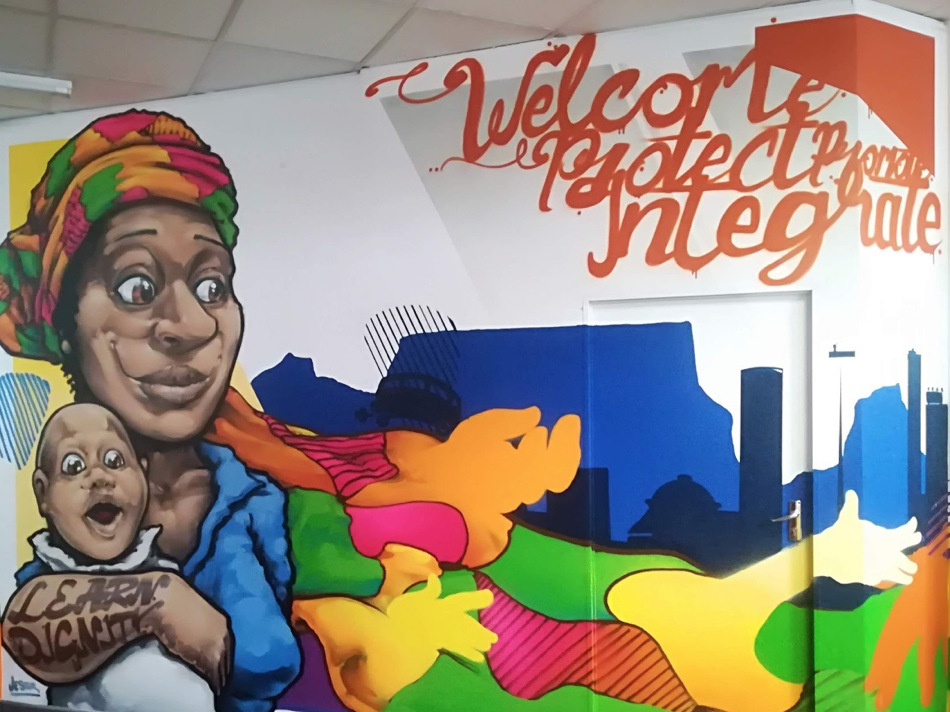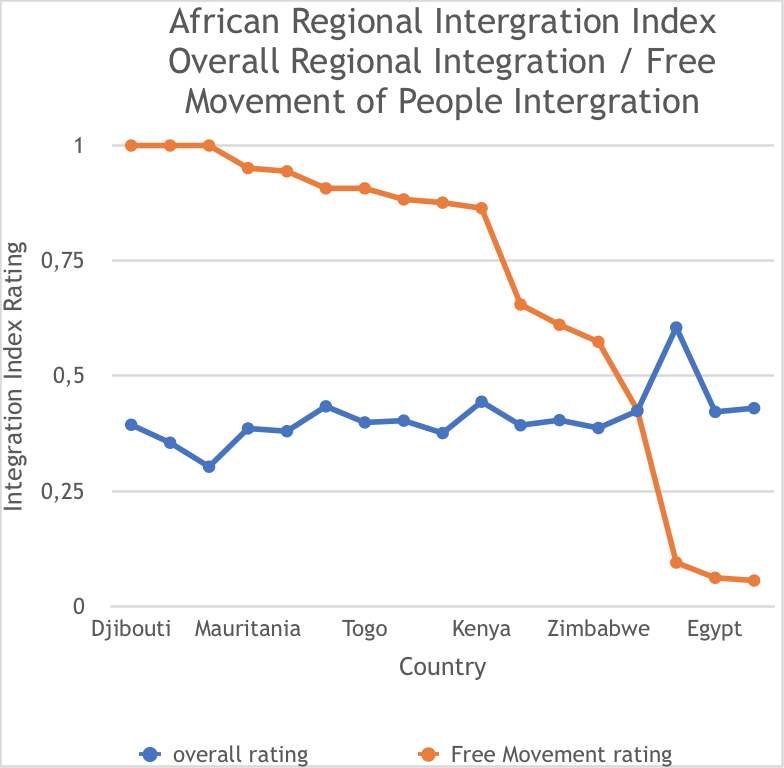
MIGRATION AND INTEGRATION - Moving towards greater INCLUSION AND SOCIAL COHESION
How are we as a society doing in terms of inclusion, unity, and integration? How are people on the move treated within communities and while on the move? In some ways society is more accepting, inclusive, and understanding than it has been in previous years. The pandemic has shaken the foundations of existence across the world and exposed our fragility. We have a new appreciation for humanity, human dignity and for life itself. Yet in the midst of the unity to face and respond to the very real threat posed by the pandemic how do we work towards being more inclusive, accepting and embracing of different people, cultures and ideologies? How do we move towards an even wider ‘we’ (1) inclusive of all people on the move?
“Towards an even wider ‘we’” is the theme for World Day of Migrants and Refugees (WDMR) on 26 September 2021 (1). Since 1914 the Church has been celebrating the World Day of Migrants and Refugees as an occasion to stand alongside and express concern for different vulnerable people on the move (1). It also provides an opportunity ‘to pray for [people on the move] as they face many challenges; and to increase awareness about the opportunities that migration offers.’(1) One may also consider the Pope’s Message for the 2020 WDMR (1) and find it interesting to look at SIHMA’s blog post on the 2020 WDMR (2). So what should we consider in working “Towards an even wider ‘we’?
‘If prosperity, social cohesion, and human development are the destination, then regional integration is the path’ according to the Africa Regional Integration Index Report 2019 (3). The report looks at Integration from the perspective of the following indicators: Free Movement of People, Trade Integration, Productive Integration, Macroeconomic Integration and Infrastructural Integration (3). While in terms of all the indicators looked at collectively countries like South Africa, Morocco and Egypt perform very well with overall regional integration indexes ranking first, fourth and sixth in Africa respectively, they all perform very poorly in terms of Free Movement of People integration (ranked 45th 48th and 47th in Africa respectively)(3). Conversely other high performing countries in terms of overall regional integration, like Kenya and Rwanda ranked second and third respectively, also perform very well in terms of Free Movement of People (3). In fact of the top 10 highest performing countries in terms of overall regional integration, six countries reflect a high free movement of people index being Djibouti, Ghana, Kenya, Rwanda, Senegal and Togo (3). See the table below:

Data for the above graph is derived from the Africa Regional Integration Index Report 2019 (3)
Of the 17 African Countries listed above, 15 are the 15 best performing countries in terms of the Overall Regional Integration Index, with Comoros and Somalia falling out of the top 15 and yet are included on the graph as they are joint best performing with Djibouti in terms of Free Movement of People with all three countries meeting the full criteria for the highest possible value of one (3). The three criteria considered are: what is the number of countries which require a visa, how many countries’ nationals may obtain a visa on arrival, and whether the country is a signatory to the Free Movement of Persons Protocol (Kigali) (3)? In terms of the free movement of people the best ‘performing countries offer visas on arrival to the citizens of all of the other countries in Africa… [and] have also signed the Free Movement of Persons Protocol (Kigali). This is not the case with the bottom performers, whose policies create difficulties for African travellers: they hinder business, discourage tourism, and prevent integration in general’ (3). It is essential that countries across the country and globally take steps towards greater integration particular through improvements in free movement policies and practices.
A fundamental and important part of the cycle of migration is the connection or relationship between migrants and host communities (4). The relationship manifests as sociological and psychological processes of adaptation between receiving communities and migrants that affect the extend of inclusion and belonging the migrants experience (4). Settling in a new community – either temporarily or permanently – may require adaptation to new social values, culture, language and customs (4). The degree of progressive inclusion of migrants in the host country is also dependent on the receiving communities’ openness and attitudes towards migrants and migration (4).
As the impact of diversity and migration on social cohesion has become a growing and important concern, we see inclusion policies adopted by some States to address the relationship between receiving communities and migrants, and preserve social cohesion (4)
There are many different forms of inclusion policy in different countries, which reflect societal values which include views on immigration and diversity (4).
Most countries globally preclude migrants from voting or any involvement in national elections. Malawi and four other countries (Chile, Ecuador, New Zealand and Uruguay), however, allow for political inclusion of migrants of all nationalities in national elections after a certain period within the country.
In some instances migration status does not impact on inclusion. For instance research in West Africa reflects that migrants are not disadvantaged compared with non-migrants, and that urban area inclusion concerns locals as much as migrants (5) and (4). Other research is pointing to gated communities as one of the key phenomena of urbanisation in Africa(4). After first appearing in South Africa, these gated communities have rapidly spread across the continent. Current research is focusing on the influence of these communities on achieving inclusive and sustainable urban transitions (6) and (4). They also raise the question of their impact on overall community cohesion, including for migrants’ inclusion, as they reinforce segregation by increasing social differences between migrants and non-migrants (6) and (4). ‘comfortable bubbles for transnational families in Khartoum, and elite enclaves in South Africa, each shows the negative impact of self-selection and social seclusion on inclusive and sustainable urban development’ (6).
Drawing from the IOM World Migration Report, 2020, there are “three main policy implications… to foster migrants’ inclusion and social cohesion:
• The adoption of holistic inclusion policies has the potential to improve the effectiveness of policy responses in the field of inclusion…
• More inclusive policy responses in a wide range of related policy areas leads to deeper and more sustainable inclusion outcomes…
• The important role already played by local actors and migrants calls for further strengthening their involvement in developing and (re-)evaluating national inclusion policies.”(4)
Annually the Catholic Immigrant Integration Initiative (CIII) Conference is held which provides insights into Integration. In 2020 Father Filippo Ferraro, SIHMA’s Executive Director, was one of the panellists at on of the CIII Conference simultaneous sessions hosted by the Centre for Migration Studies of New York (CMS) and the University of Notre Dame, entitled “Addressing the Legal Obstacles to Immigrant Integration, Protection and Defence” (7). The theme for last year’s conference, held at the beginning of October 2020, was “Building Communities of Belonging and Hope”. During the conference diverse panels of immigrants, refugees, and experts gave their perspectives on the primary challenges facing immigrants, refugees, and their families, both in the broader society and in their faith communities, including challenges related to COVID-19 and related policies (7).
Integration and inclusion are crucial aspects of the migration phenomenon and integrating is a crucial action in responding to challenges presented by migration. As Pope Francis puts it ‘I feel the need to express particular concern for the forced nature of many contemporary migratory movements, which increases the challenges presented to the political community, to civil society and to the Church, and which amplifies the urgency for a coordinated and effective response to these challenges. Our shared response may be articulated by four verbs: to welcome, to protect, to promote and to integrate’ (8). In terms of the verb to integrate Pope Francis goes on to say: ‘To integrate. Integration, which is neither assimilation nor incorporation, is a two-way process, rooted essentially in the joint recognition of the other’s cultural richness: it is not the superimposing of one culture over another, nor mutual isolation, with the insidious and dangerous risk of creating ghettoes. Concerning those who arrive and who are duty bound not to close themselves off from the culture and traditions of the receiving country, respecting above all its laws, the family dimension of the process of integration must not be overlooked: for this reason I feel the need to reiterate the necessity, often presented by the Magisterium (cf. John Paul II, Message for World Migration Day, 15 August 1986), of policies directed at favouring and benefiting the reunion of families. With regard to indigenous populations, they must be supported, by helping them to be sufficiently aware of and open to processes of integration which, though not always simple and immediate, are always essential and, for the future, indispensable. This requires specific programmes, which foster significant encounters with others. Furthermore, for the Christian community, the peaceful integration of persons of various cultures is, in some way, a reflection of its catholicity, since unity, which does not nullify ethnic and cultural diversity, constitutes a part of the life of the Church, who in the Spirit of Pentecost is open to all and desires to embrace all (cf. John Paul II, Message for World Migration Day, 5 August 1987)’ (8).
From the about it is clear that integration and inclusion are crucial, fundamental tenants of migration. As we move towards an even wider ‘we’ SIMHA is challenged to assess what the organisation can do and also to challenge individuals, communities, and governments to adopt a proactive approach to migration that fosters integration and inclusion which is beneficial to migrant and receiving communities alike.
James Chapmann
SIHMA Project Manager
INTEREST IN WRITING SOMETHING FOR SIHMA?
If you are interested in contributing the SIHMA Blog on the Move please contact us at: https://www.sihma.org.za/contact or if you are interested writing an article to be reviewed and published in the African Human Mobility Review, please follow this link on making a submission: https://www.sihma.org.za/submit-an-article
- TOWARDS AN EVER WIDER “WE” is the theme for World Day of Migrants and Refugees which will be on 26 September 2021. See https://migrants-refugees.va/world-day-of-migrants-refugees/
- https://www.sihma.org.za/Blog-on-the-move/world-day-for-migrants-and-refugees-forced-like-jesus-christ-to-flee
- https://www.integrate-africa.org/reports-data/download-the-2019-reports/
- IOM World Migration Report, 2020 available at: https://www.un.org/sites/un2.un.org/files/wmr_2020.pdf
- Migration and Urbanization in Francophone West Africa: A Review of the Recent Empirical Evidence. Document de travail DIAL/Unité de Recherche CIPRÉ. Available at www.researchgate.net/profile/Cris_Beauchemin/publication/4793663_Migration_and_urbanization_in_francophone_west_Africa_a_review_of_the_recent_empirical_evidence/ links/00b495359529f8673c000000.pdf.
- Klaufus, C., P. van Lindert, F. van Noorloos and G. Steel 2017 All-inclusiveness versus exclusion: Urban project development in Latin America and Africa. Sustainability, 9(11):2038–1053.
- https://sihma.org.za/Blog-on-the-move/catholic-immigrant-initiative-ciii-conference
- Address of His Holiness Pope Francis to Participants In The International Forum On "Migration And Peace", Tuesday, 21 February 2017. Available at: http://www.vatican.va/content/francesco/en/speeches/2017/february/documents/papa-francesco_20170221_forum-migrazioni-pace.html
Categories:
Tags:

